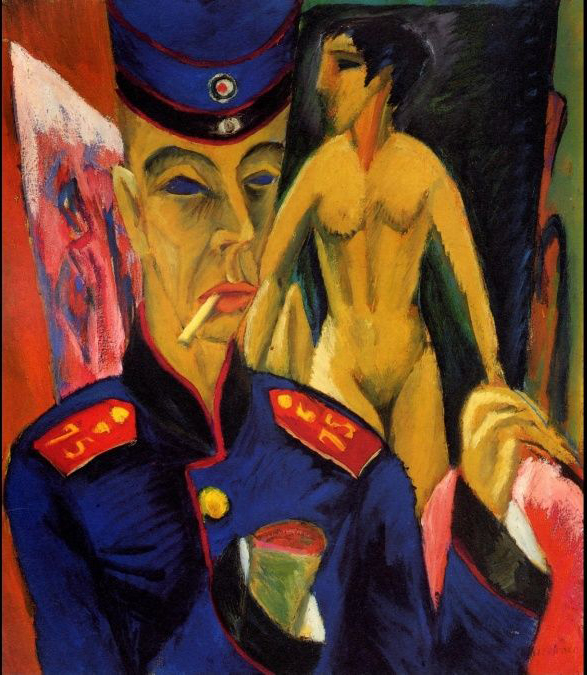by Daniel Hathaway

That’s a vast subject to explore in a weekend, and Oberlin’s musicians, scholars, and guests didn’t pretend to create an exhaustive study of music surrounding The Great War. Like most thoughtful festivals, this one provided multiple ways to approach a subject, perhaps raising more questions than it answered, but whetting appetites for further inquiry.
I attended the opening concert on Saturday afternoon in Warner Concert Hall and caught the live stream of the third performance on Sunday in Kulas Recital Hall. The two were quite different.
Oberlin musicologist Charles McGuire gave an engaging pre-concert talk before the Saturday performances of three revelatory works of the period. A glitch with amplification left McGuire at the mercy of Warner’s boomy acoustic and some details of his argument went missing, but he cogently suggested that Debussy’s Cello Sonata, Ravel’s La Valse, and Elgar’s Piano Quartet all bear stylistic evidence of the effect World War I had on music, even though the composers weren’t directly involved in the conflict.
Cellist Darrett Adkins and pianist Angela Cheng joined in a gripping performance of the Debussy Sonata, written in 1915 and sounding very modern indeed. Cheng returned for a compelling performance of the two-piano version of La Valse, her husband Alvin Chow at the other of two interlocking Steinways. Supple with rhythm and dazzling with glissandos, Cheng’s and Chow’s playing embodied the giddiness of the end of the War (the piece dates from 1918) as well as bidding auf Wiedersehen to the end of an era.
Though also dating from 1918, Elgar’s Piano Quintet breathed the sentiments of an earlier era as well as the pastoral, elegiac nature of much British music from the late 19th century onward. In his talk, McGuire debunked the idea that the piece involved a legend of Spanish monks turned into trees, but what came across in the performance was the very orchestral quality of Elgar’s textures, even in a chamber work.
Bernhardsson and fellow violinist David Bowlin perfectly matched each other’s bow strokes, violist Kirsten Docter was a paragon of blend — although she ventured out of the ensemble for beautiful solos in the Adagio — and Adkins and pianist Haewon Song grounded the ensemble expertly. The numerous unison passages were well-tuned and beautifully shaped. This ensemble should perform together often.
Live streaming is a welcome addition to the technological toolbelt, making it possible to check in on performances when travel schedules preclude showing up in person. Sunday’s 1:30 pm concert of works composed between 1914 and 1918 was an interesting collection of pieces that might rarely appear on a program that didn’t have World War I on its mind.
Bernhardsson and pianist Peter Takács began with an incisive performance of Janáček’s eccentric Violin Sonata. Flutist Alexa Still followed with Debussy’s short but evocative Syrinx, then joined pianist James Howsmon for Busoni’s curious little Albumblatt. Mezzo-soprano Lorraine Manz and Howsmon closed the short program with haunting performances of songs by Arthur Foote, Kurt Weill, and Hanns Eisler. Foote set very topical poems like In Flanders Field that many of us memorized in high school, while Eisler put music to Bertolt Brecht’s manifesto, “Change this World: she cries out for it.”
It would have been enlightening to have attended all of last weekend’s events, but just dipping a toe into this festival made it clear that the Oberlin faculty participants were seriously committed to the project, an enterprise cleverly designed to maximize the number of participants while minimizing the amount of work each had to take on. Surely everyone learned something in the process, especially those in the audience, and especially students. Would that every academic year might begin so auspiciously.
Published on ClevelandClassical.com September 11, 2018.
Click here for a printable copy of this article



